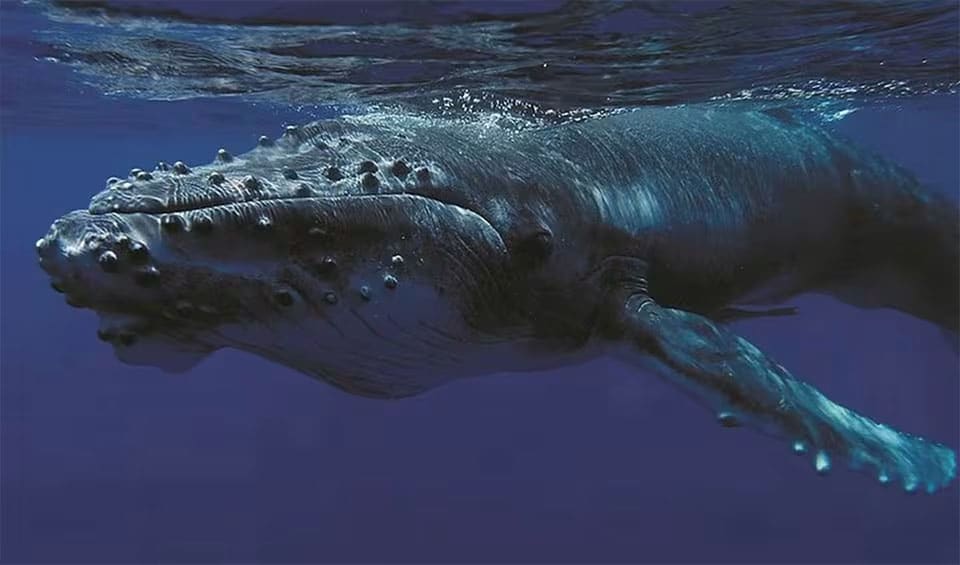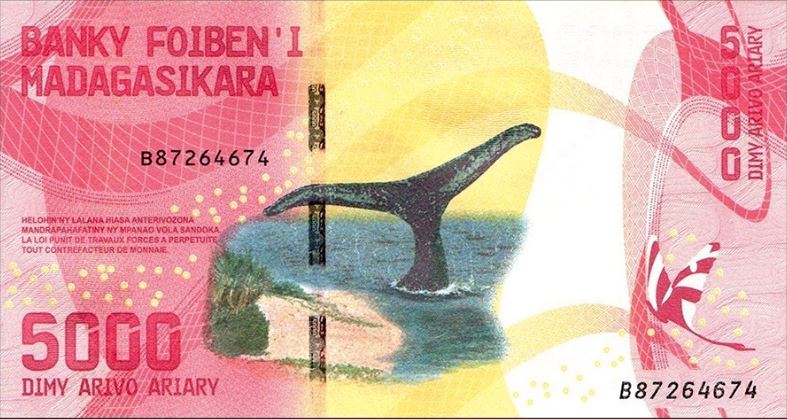Its distinctive body shape and remarkable behaviors make it one of the most recognized and studied baleen whale species. Named for the characteristic hump on their backs visible when diving, these marine giants are also renowned for their extraordinarily long pectoral fins, which can span up to one-third of their body length, making them one of the most distinctive features of this species.
The coloration of humpback whales varies from a deep black to shades of grey, with unique white patterns on their ventral side (belly) that serve as a natural means of identification. These patterns are as unique to each individual as fingerprints are to humans, providing researchers and conservationists with a non-invasive way to monitor specific whales over time.
Humpback whales are among the longest-migrating mammals on Earth. Their epic journeys, covering up to 25,000 kilometers (about 16,000 miles) annually, testify to their endurance and the critical need for a global conservation approach. These migrations take them from feeding grounds in polar waters, rich with small fish and krill, to warmer tropical and subtropical waters where they breed and give birth. During these migrations, humpback whales rely on their substantial fat reserves, accumulated in colder waters, as they scarcely feed in the breeding grounds.
One of the humpback whale’s most mesmerizing behaviors is the male’s complex song production. While the precise purpose of these vocalizations remains a topic of scientific inquiry, it is widely believed that they play a significant role in mating rituals, potentially attracting females and establishing dominance among males.
The humpback whale, once hunted to the brink of extinction, has made a significant comeback due to international conservation efforts, including the 1982 moratorium on commercial whaling. Despite this success, they continue to face threats from entanglement in fishing gear, ship strikes, and the impacts of climate change on their ocean habitats.
Distribution
 Indian ocean
Indian ocean Pacific ocean
Pacific ocean Arctic Ocean
Arctic Ocean Atlantic Ocean
Atlantic Ocean Mediterranean Sea
Mediterranean Sea Caribbean Sea
Caribbean Sea Gulf of Mexico
Gulf of Mexico Okhotsk Sea
Okhotsk Sea Bering Sea
Bering SeaDid you know?
- Have one of the longest migration of any mammals.
Anything we've missed?
Help us improve this page by suggesting edits. Glory never dies!
Suggest an editGet to know me
Terrestrial / Aquatic
Altricial / Precocial
Polygamous / Monogamous
Dimorphic (size) / Monomorphic
Active: Diurnal / Nocturnal
Social behavior: Solitary / Pack / Herd / Group
Diet: Carnivore / Herbivore / Omnivore / Piscivorous / Insectivore
Migratory: Yes / No
Domesticated: Yes / No
Dangerous: Yes / No







